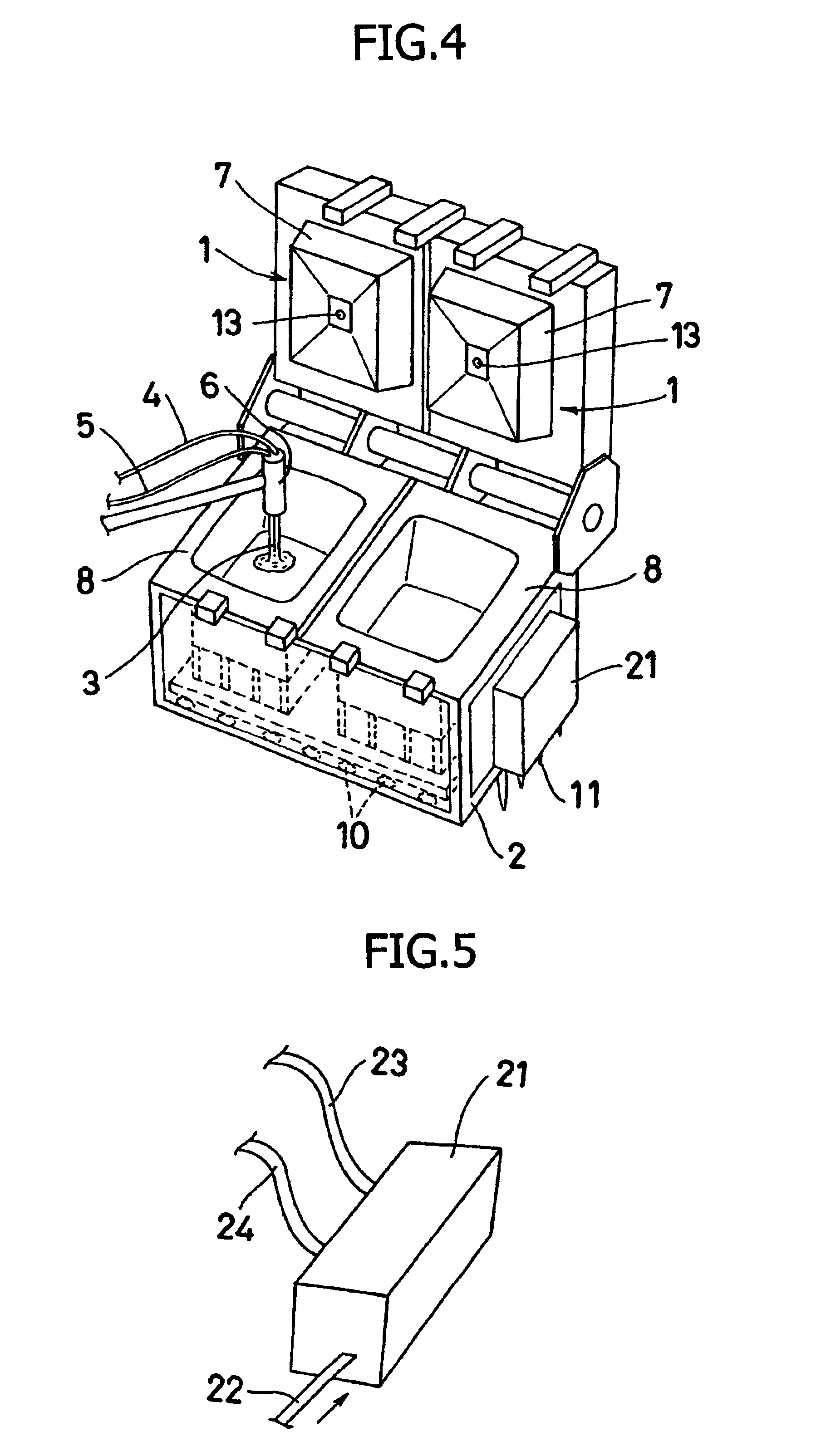Process for the production of a lightweight cold urethane
a cold urethane and lightweight technology, applied in the field of cold urethane production process, can solve the problems of poor fuel consumption, increase in car body weight, high cost, etc., and achieve the effect of uniform dispersion of auxiliary ingredients and preventing rus
- Summary
- Abstract
- Description
- Claims
- Application Information
AI Technical Summary
Benefits of technology
Problems solved by technology
Method used
Image
Examples
example
[0092]Using the raw materials shown in Table 4 below, backrests of lightweight cold urethane were produced by means of a four-component injection head.
[0093]
TABLE 4Compoundingratio (byRaw materialsManufacturerweight)Fluid APolyol (PPG + POP)Asahi Glass100Co., Ltd.Crosslinking agentMitsui1.0(diethanolamine)Chemicals,Inc.Catalyst (TEDA-L33)Tosoh0.5CorporationCatalystTosoh0.08(TOYOCAT-ET)CorporationSilicone foamNippon Unicar0.6stabilizer (SZ-1333)Co., Ltd.Silicone foamNippon Unicar0.9stabilizer (L-5309)Co., Ltd.Foam breaker (DKDai-ichi Kogyo5.5FLEX 800)Seiyaku Co.,Ltd.Foaming agent (H2O)3.7Fluid BIsocyanate (TM-20)Mitsui45.0Chemicals,Inc.
[0094]The ingredients except for polyol of fluid A corresponds to a composition of auxiliary ingredients.
[0095]As the polyol, a combination of XF-8387 (trade name) and EL-946 (trade name), both manufactured by Asahi Glass Co., Ltd., was used.
[0096]As the amine catalyst, a solution containing 33% of triethylenediamine in 67% of dipropylene glycol was us...
PUM
| Property | Measurement | Unit |
|---|---|---|
| density | aaaaa | aaaaa |
| density | aaaaa | aaaaa |
| density | aaaaa | aaaaa |
Abstract
Description
Claims
Application Information
 Login to View More
Login to View More - R&D
- Intellectual Property
- Life Sciences
- Materials
- Tech Scout
- Unparalleled Data Quality
- Higher Quality Content
- 60% Fewer Hallucinations
Browse by: Latest US Patents, China's latest patents, Technical Efficacy Thesaurus, Application Domain, Technology Topic, Popular Technical Reports.
© 2025 PatSnap. All rights reserved.Legal|Privacy policy|Modern Slavery Act Transparency Statement|Sitemap|About US| Contact US: help@patsnap.com



